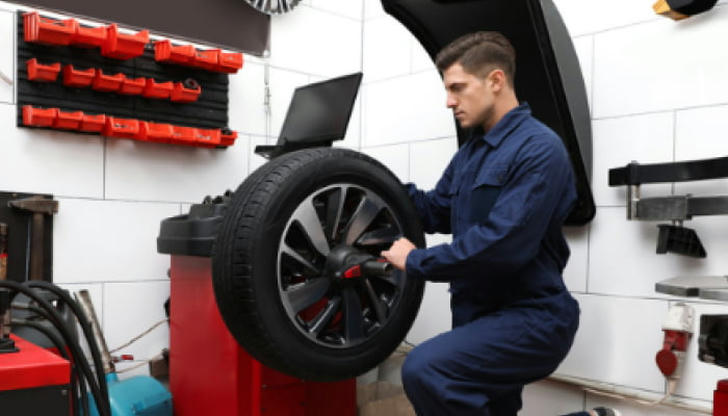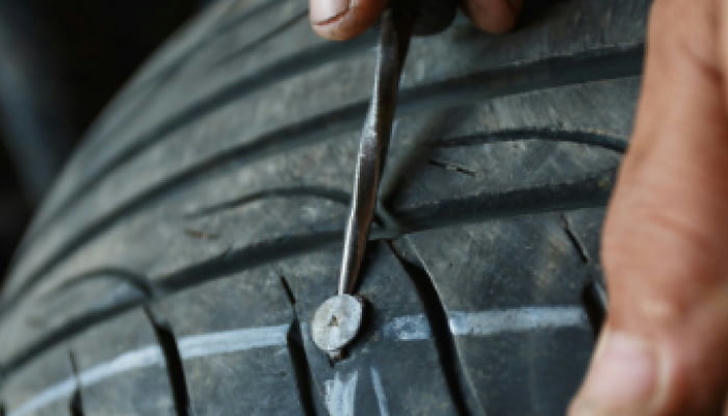Tire Rotation and Alignment: Key Maintenance Tips for Prolonging Tire Life

Tires are among the most critical components of a vehicle. Proper tire care is essential not only for enhancing driving safety but also for extending the lifespan of your tires. Two of the most important aspects of tire maintenance are tire rotation and alignment. In this article, we will explore these key maintenance tips in detail, explaining how tire rotation and alignment work, their benefits, and how they can help you get the most out of your tires.
This article will help you understand why these maintenance tasks are so important and how you can take simple steps to ensure your tires last longer.
What is Tire Rotation?

Tire rotation is the practice of periodically moving your tires from one position to another. This process ensures that all tires wear evenly over time. Since the front and rear tires wear at different rates, tire rotation helps balance the wear patterns.
For instance, in a front-wheel-drive vehicle, the front tires wear faster because they handle most of the braking, turning, and acceleration. By rotating the tires, the stress on each tire is evenly distributed, prolonging the life of all four tires.
Benefits of Regular Tire Rotation

Tire rotation offers several advantages, including:
Even Wear Distribution: By rotating your tires, you can ensure that all tires wear evenly, reducing the risk of uneven tread patterns.
Improved Performance: Regular tire rotation enhances traction and handling, resulting in a smoother ride.
Extended Tire Lifespan: Rotating tires increases their longevity, saving you money on replacements in the long run.
Better Fuel Efficiency: Evenly worn tires reduce rolling resistance, improving fuel economy.
Safer Driving: Properly maintained tires are less likely to blow out or fail, reducing the risk of accidents.
What is Tire Alignment?
Tire alignment, also known as wheel alignment, involves adjusting the angles of the wheels to ensure they are parallel to each other and perpendicular to the road. When a vehicle’s wheels are properly aligned, the tires make uniform contact with the road surface, preventing uneven wear.
Wheel alignment is crucial for vehicle stability, steering control, and overall safety. Misaligned wheels can cause the vehicle to pull to one side, vibrate, or feel unstable while driving. Proper alignment also helps maximize the lifespan of your tires and reduces the strain on suspension components.
Signs That Your Vehicle Needs an Alignment
Misalignment can occur due to factors such as hitting potholes, curbs, or general wear and tear. Here are some common signs that your vehicle may need an alignment:
Pulling to One Side: If your vehicle drifts or pulls to one side while driving straight, it could be a sign of misalignment.
Uneven Tire Wear: Check for uneven tread wear on your tires. Misalignment often causes excessive wear on one side of the tire.
Steering Wheel Vibration: If your steering wheel vibrates or shakes at high speeds, your wheels may be out of alignment.
Crooked Steering Wheel: If your steering wheel is off-center while driving straight, it’s a clear indicator that your wheels need alignment.
Benefits of Proper Wheel Alignment
Proper alignment offers many benefits, including:
Extended Tire Life: Correct alignment ensures even tread wear, helping your tires last longer.
Improved Handling: Properly aligned wheels make your vehicle easier to control, improving safety and comfort.
Increased Fuel Efficiency: Misaligned wheels create rolling resistance, which forces the engine to work harder and consume more fuel. Proper alignment can help you save on gas.
Reduced Wear on Suspension: Correct alignment reduces strain on your vehicle’s suspension and steering components, preventing costly repairs.
Tire Rotation vs. Alignment: What’s the Difference?
Tire rotation and alignment are both essential for tire maintenance, but they serve different purposes.
Tire Rotation: Involves moving tires to different positions to ensure even wear. It is recommended every 5,000 to 8,000 miles.
Tire Alignment: This involves adjusting the angles of the wheels to ensure they are parallel and perpendicular to the road. Alignment should be checked whenever you notice signs of misalignment.
While tire rotation is a preventive measure to extend tire life, alignment is a corrective procedure to address specific issues with your vehicle’s handling.
Additional Tips for Extending Tire Life

In addition to regular tire rotation and alignment, here are some extra tips to keep your tires in great condition:
Maintain Proper Tire Pressure: Under-inflated or over-inflated tires can cause uneven wear and reduce fuel efficiency. Check your tire pressure regularly and keep it at the recommended level.
Inspect Tread Depth: Worn-out tires are unsafe to drive on. Check your tread depth using a penny or a tread depth gauge to ensure your tires have sufficient grip.
Avoid Overloading Your Vehicle: Excess weight puts additional stress on your tires, leading to faster wear.
Drive Gently: Aggressive driving, such as sudden braking or rapid acceleration, can cause uneven tire wear. Drive smoothly to extend tire life.
Conclusion
Tire rotation and alignment are simple yet crucial maintenance tasks that can significantly extend the life of your tires and improve your vehicle's performance. By rotating your tires regularly and ensuring proper wheel alignment, you can avoid uneven wear, enhance handling, and save money on tire replacements in the long run.
Remember to check your tire pressure, tread depth, and alignment regularly to keep your tires in top condition. Taking care of your tires not only ensures a safer driving experience but also helps you get the most value out of your investment. Prioritizing these maintenance tasks will keep your vehicle running smoothly for miles to come.
